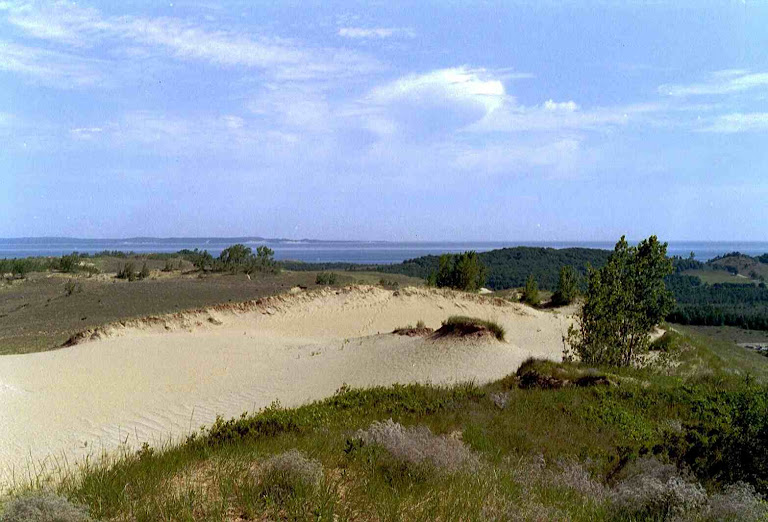As a way of furthering Edward Byrne's blog entry on Jazz Music and Poetry (September 22, 2008), here are a few paragraphs from an unpublished paper of mine, "Syncopated tunes: poetry, memory, & all that jazz"
* * *
Langston Hughes, who listened to the music of the Chicago streets in the summer of 1918 and to ragtime and early jazz while doing odd-jobs in Montmartre in 1924, was influenced by blues and jazz in his poems from the beginning. He charted something of the history of jazz in his poetry as well as in a book for children (The First Book of Jazz, 1955). The iconic prize winning title poem for his first collection of poems, The Weary Blues (1926), was first published in the May 1925 issue of Opportunity. The poem traces the evolution from negro-spiritual to blues to ragtime to jazz, through the sounds it makes. The first two, decasyllabic lines are not pentameters but lines of 4 beats, and syncopated, with the sound of the syncopation cleverly falling squarely on the word syncopated in line one. The sound repetitions create melody:
Droning a drowsy syncopated tune,
Rocking back and forth to a mellow croon,
I heard a Negro play.
Hughes did not say outright, like Amira Baraka did later, that jazz was born in the brothels of Saint Louis before it hit the streets of Chicago, but two poems from The Weary Blues suggest as much by being first published on the same page of the August 1923 issue of Crisis: “Young Prostitute” and “Jazzonia.” In 1927, the decadence of what was being called the jazz era and the quick traumatic lives of the dancers and musicians was again put into poetry by Hughes in “Jazz Girl,” first published in Black Opals 1:1 (Spring 1927).
James Weldon Johnson in the introduction to his sermons in verse called God’s Trombones (1927), suggested that African American poetry needed to find a form that would “express the racial spirit by symbols from within rather than by symbols from without” (8). Although the poems do not mention jazz, and hardly seem rhythmically influenced by it, the trombones evoke the bands of the cabarets. Altogether different, Sterling A. Brown’s “Cabaret (1927, Black & Tan Chicago)” highlighted the contrast between the lives of those who listened to the music, the “Rich, flashy, puffy-faced” and the musicians that provided their good times:
(By way of Atlanta, Louisville, Washington, Yonkers,
With stop-overs they’ve used nearly all their lives)
And the poem registers the sounds of the music, demonstrating that possibly even before scat was sung, it was written:
Bee—dap—ee—DOOP, dee—ba—dee—BOOP
The poem tells of African Americans in serfdom in Arkansas, of girls that “wiggle and twist” (and more) for the money, during this grand Cabaret evening, following the great flood of 1927 when Blacks were not rescued:
(In Mississippi
The black folk huddle, mute, uncomprehending,
Wondering ‘how come the good Lord
Could treat them this a way’)
The closing music, where the word “death” precedes the last line, is both the closure of a jazz tune and an allusion to the death march:
Dee da dee D A A A A H.
Meanwhile, Mina Loy’s “The Widow’s Jazz” begins “The white flesh quakes to the negro soul / Chicago! Chicago!” and the music evokes “the encroaching Eros / in adolescence.” Tad Richards noted that Loy “used jazz as a setting for urban dramas of love and sexuality” and race, but he did not mention Loy’s fascination with primitivism: see the “snakes”, the “primeval goal”, the “tropic breath” mentioned in the poem.
How quickly were the new sounds and styles fostered by jazz entering the larger poetic idiom? T.S. Eliot’s first title for The Waste Land, “He Do the Police In Different Voices” and the collage present in that work, suggest that it was influenced by jazz (Yaffe 125) and the “Shakespeherian Rag” mentioned in the second part of the poem, (“A Game of Chess”) was identified by Ralph Ellison as a ragtime hit (Yaffe 96-97). Whether or not E.E. Cummings had music on his mind when he composed “next to of course god america i” (1926), the poem reads like a long jazz improvisation, anticipating the more subversive sounds to come. It incorporates components from musical sources that one would never expect. The effect is heightened by enjambment and the ellipse of “and so on” for the conjunction “and so forth” in the second line, along with the plethora of monosyllabic words, often placed at the ends of lines.
“next to of course god america i
love you land of the pilgrims’ and so forth oh
say can you see by the dawn’s early my
country ‘tis of centuries come and go. . .
In the Carolina Magazine of May 1928, Charles S. Johnson published a critical essay, “Jazz Poetry and Blues,” in which he defined jazz poetry as “a venture in the new, bold rhythms characteristic of the music.”
* * *
Sources:
Feinstein, Sascha and Komuyaka, Yusef (eds), The Jazz Poetry Anthology, Bloomington: Indiana University Press, 1991.
Yaffe, David, Fascinating Rhythm, Reading Jazz in American Writing, Princeton: Princeton UP, 2006.







